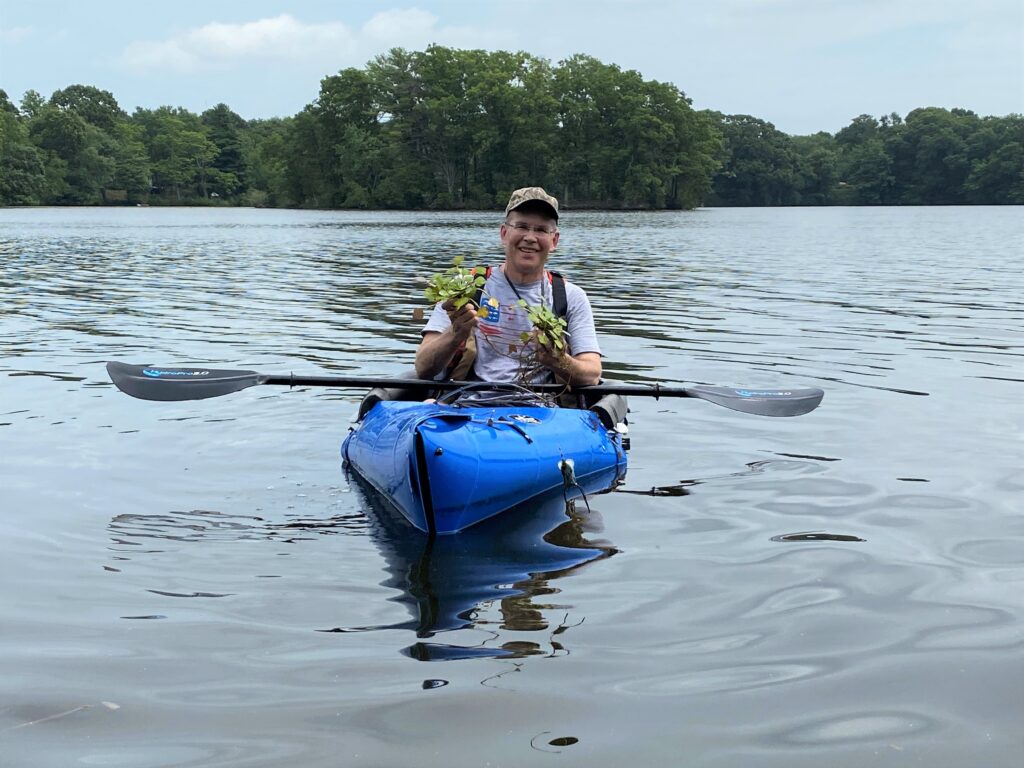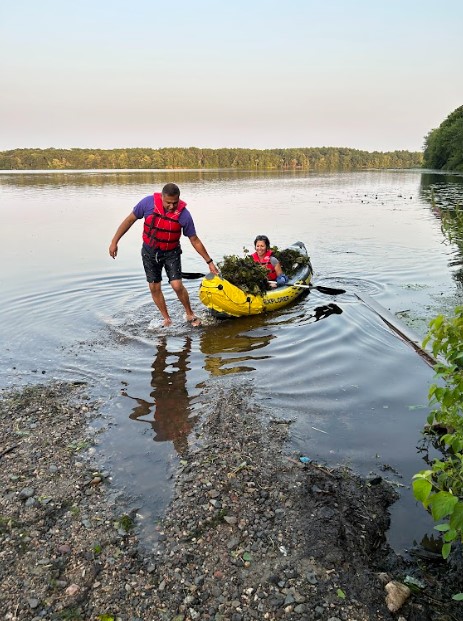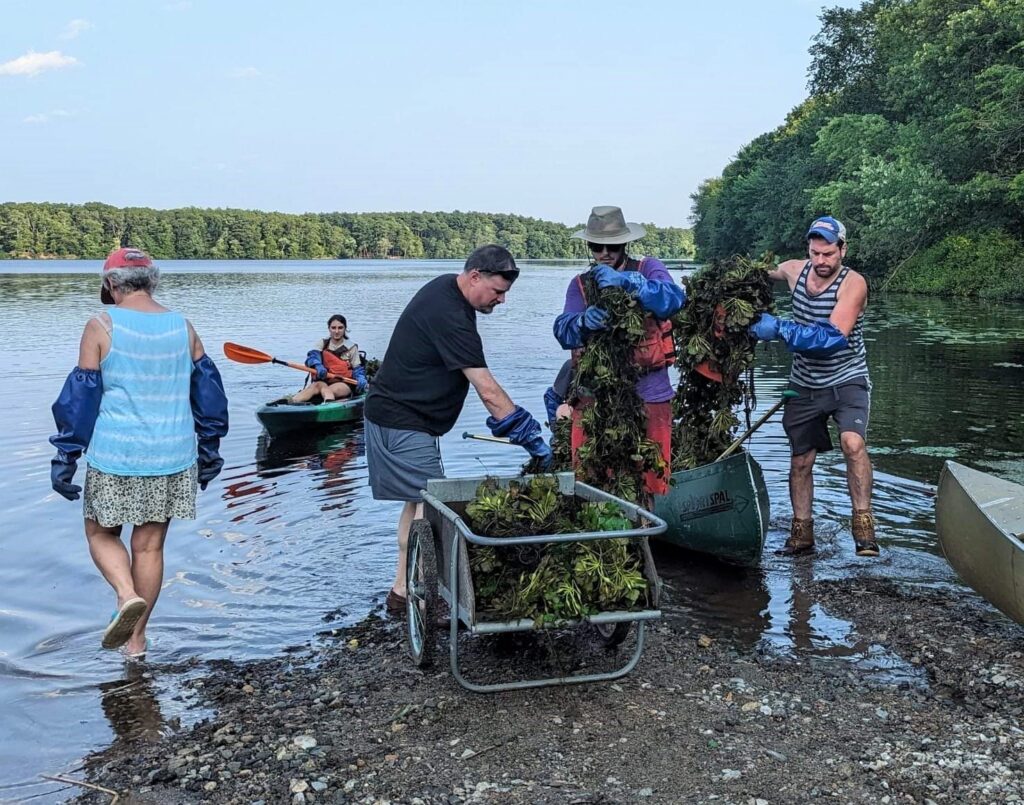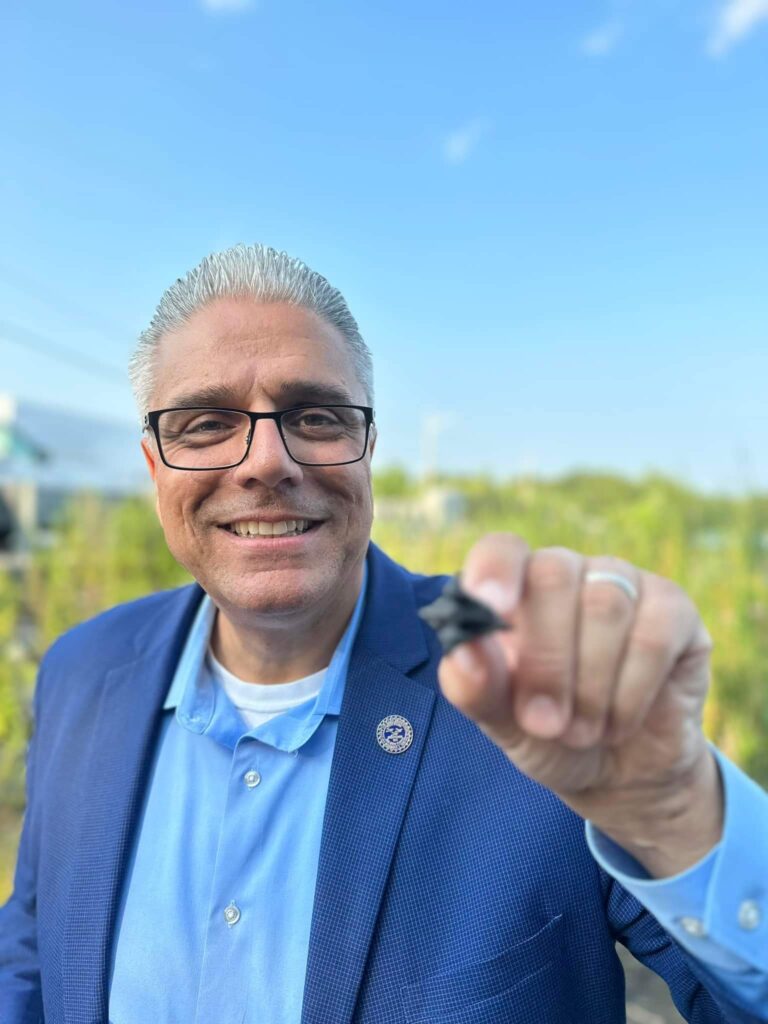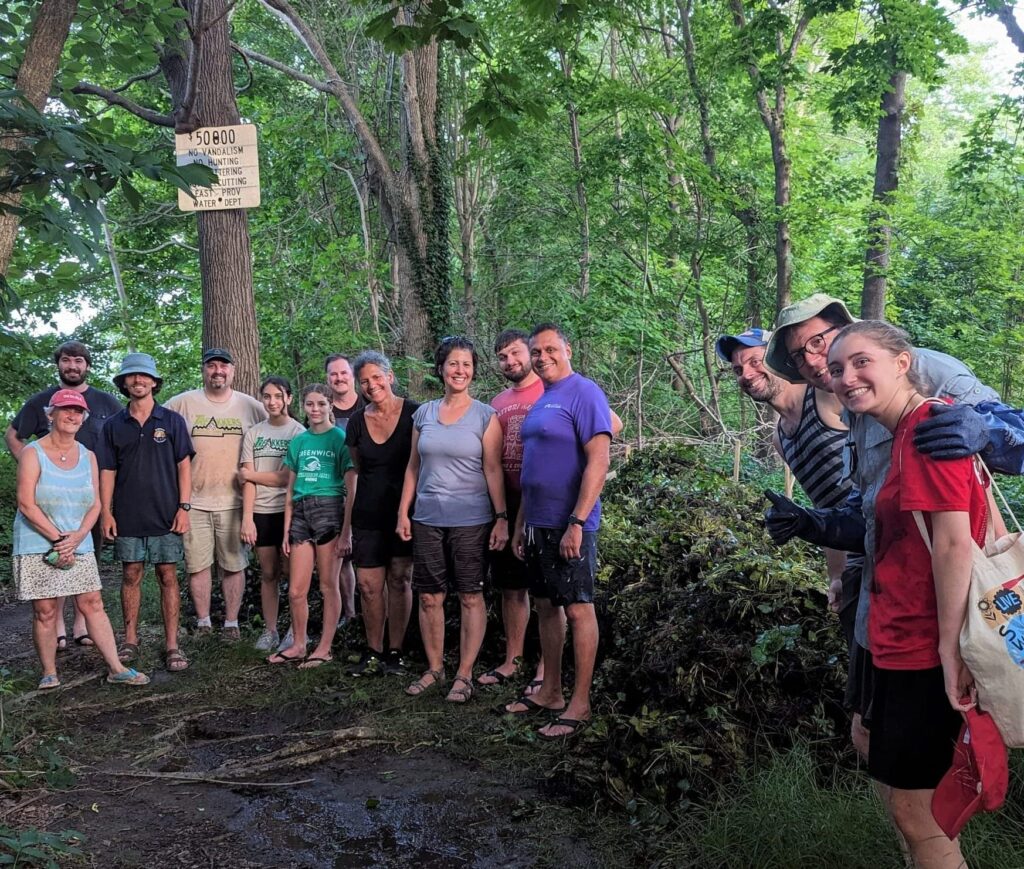Working from both land and water, volunteers hand-pulled water chestnut, an invasive plant, from waterbodies in Rhode Island and Massachusetts. Over the course of 10 events this past June and July, 133 community members removed forty-six cubic yards of plant material from four locations, totaling 463 volunteer hours. These efforts are part of a habitat restoration grant focusing on the Blackstone and Ten Mile Watersheds.
To oversee this work, NEIWPCC and the Rhode Island Department of Environmental Management (RIDEM) hired a seasonal invasive species intern. Justin DiGennaro, an undergraduate student studying environmental science and management at the University of Rhode Island, planned and organized the volunteer events, while also gaining experience in community outreach and invasive species management.
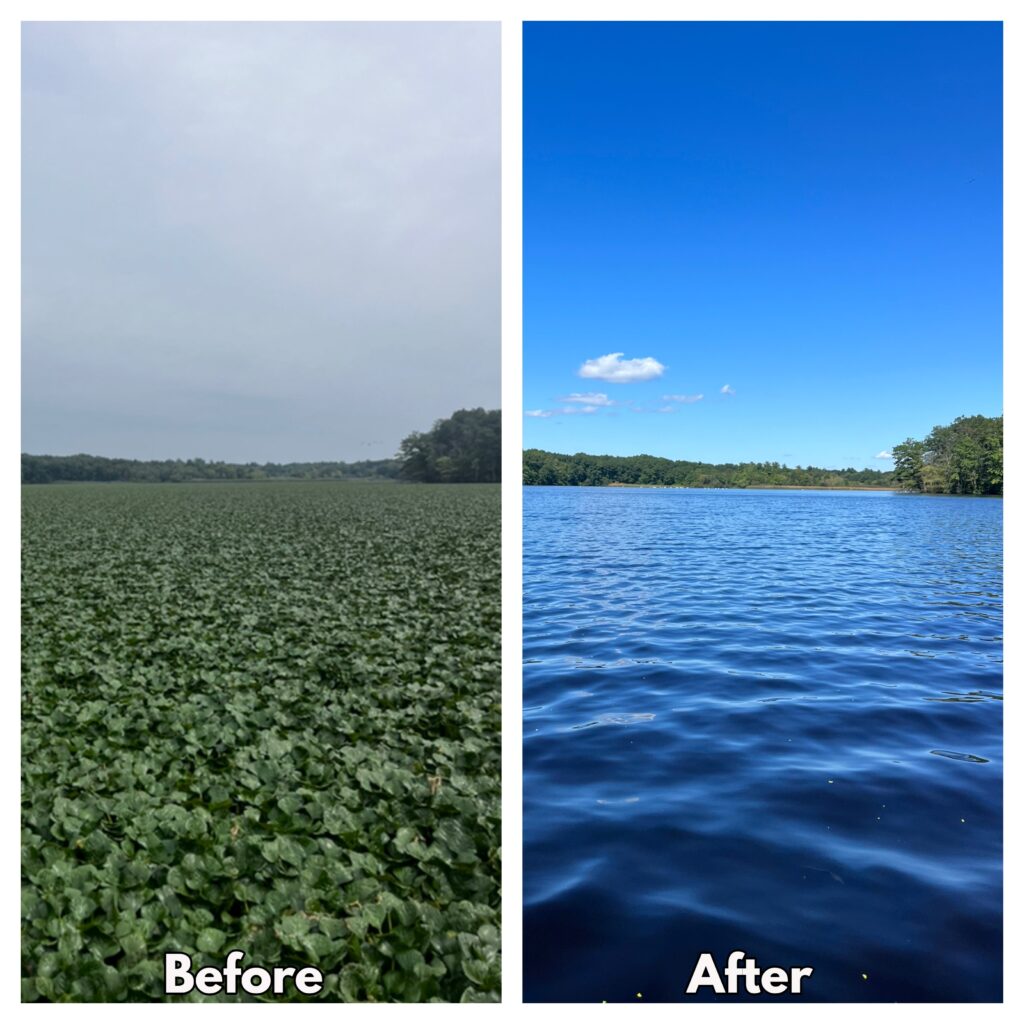
In addition to the hand-removal efforts, the city of East Providence, Rhode Island treated 63 acres of invasive water chestnut with herbicide at Central Pond. NEIWPCC also developed water chestnut management materials to support the efforts of other municipalities.
This project is funded by a Southeast New England Program (SNEP)’s Watershed Implementation Grant. Partners include RIDEM, Blackstone Valley Tourism Council, Blackstone River Watershed Council/ Friends of the Blackstone, Ten Mile River Watershed Council, Lake Quinsigamond Watershed Association, cities of Central Falls and East Providence, R.I., city of Attleboro, Mass. and the town of Uxbridge, Mass.
About Water Chestnut
Water chestnut (Trapa natans) is an aquatic invasive plant that overtakes slow-moving waterways, lakes and ponds and negatively impacts freshwater ecosystems. Water chestnuts form dense floating mats that deplete dissolved oxygen levels, shade out native plants, alter fish habitat and impede recreational activities such as swimming, fishing and boating. When left unmanaged, water chestnuts can grow exponentially, and seed beds can remain viable for up to twelve years – making a sustained, multi-year management effort a necessity.
